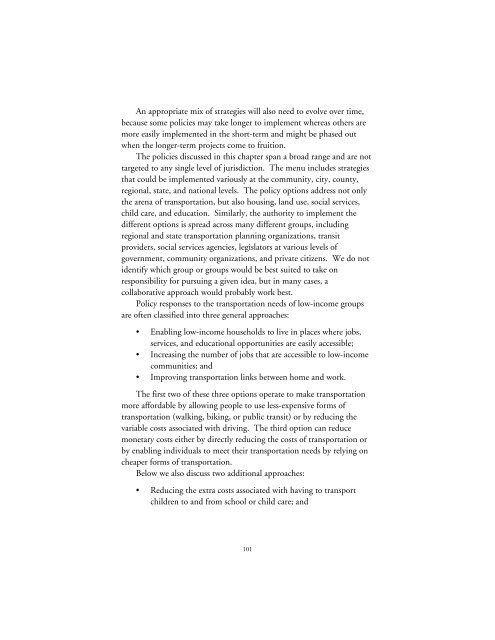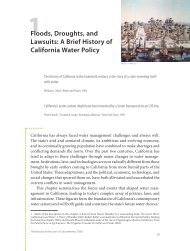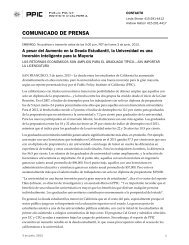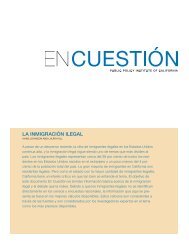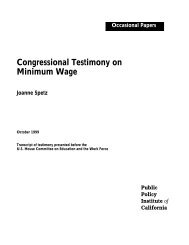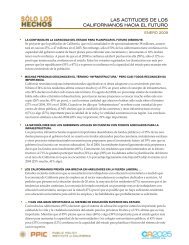Transportation Spending by Low-Income California Households ...
Transportation Spending by Low-Income California Households ...
Transportation Spending by Low-Income California Households ...
You also want an ePaper? Increase the reach of your titles
YUMPU automatically turns print PDFs into web optimized ePapers that Google loves.
An appropriate mix of strategies will also need to evolve over time,<br />
because some policies may take longer to implement whereas others are<br />
more easily implemented in the short-term and might be phased out<br />
when the longer-term projects come to fruition.<br />
The policies discussed in this chapter span a broad range and are not<br />
targeted to any single level of jurisdiction. The menu includes strategies<br />
that could be implemented variously at the community, city, county,<br />
regional, state, and national levels. The policy options address not only<br />
the arena of transportation, but also housing, land use, social services,<br />
child care, and education. Similarly, the authority to implement the<br />
different options is spread across many different groups, including<br />
regional and state transportation planning organizations, transit<br />
providers, social services agencies, legislators at various levels of<br />
government, community organizations, and private citizens. We do not<br />
identify which group or groups would be best suited to take on<br />
responsibility for pursuing a given idea, but in many cases, a<br />
collaborative approach would probably work best.<br />
Policy responses to the transportation needs of low-income groups<br />
are often classified into three general approaches:<br />
• Enabling low-income households to live in places where jobs,<br />
services, and educational opportunities are easily accessible;<br />
• Increasing the number of jobs that are accessible to low-income<br />
communities; and<br />
• Improving transportation links between home and work.<br />
The first two of these three options operate to make transportation<br />
more affordable <strong>by</strong> allowing people to use less-expensive forms of<br />
transportation (walking, biking, or public transit) or <strong>by</strong> reducing the<br />
variable costs associated with driving. The third option can reduce<br />
monetary costs either <strong>by</strong> directly reducing the costs of transportation or<br />
<strong>by</strong> enabling individuals to meet their transportation needs <strong>by</strong> relying on<br />
cheaper forms of transportation.<br />
Below we also discuss two additional approaches:<br />
• Reducing the extra costs associated with having to transport<br />
children to and from school or child care; and<br />
101


